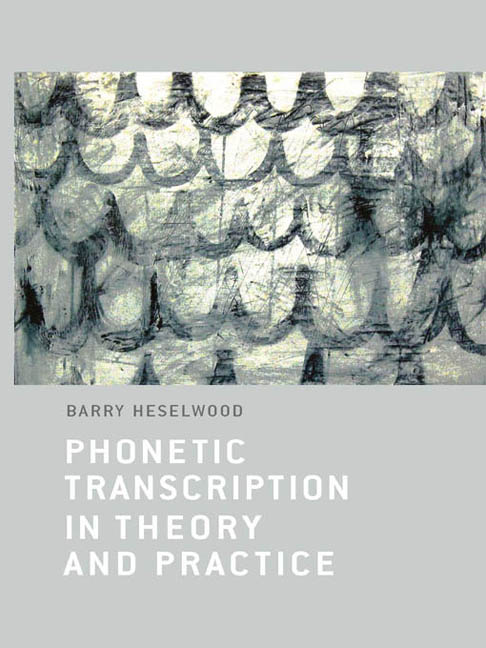Book contents
- Frontmatter
- Contents
- List of Tables
- List of Figures
- Preface
- Acknowledgements
- Introduction
- 1 Theoretical Preliminaries to Phonetic Notation and Transcription
- 2 Origins and Development of Phonetic Transcription
- 3 Phonetic Notation
- 4 Types of Transcription
- 5 Narrow Impressionistic Phonetic Transcription
- 6 Phonetic Transcription in Relation to Instrumental and Other Records
- 7 Uses of Phonetic Transcription
- Glossary
- References
- Appendix: Phonetic Notation Charts
- Index
4 - Types of Transcription
Published online by Cambridge University Press: 07 December 2017
- Frontmatter
- Contents
- List of Tables
- List of Figures
- Preface
- Acknowledgements
- Introduction
- 1 Theoretical Preliminaries to Phonetic Notation and Transcription
- 2 Origins and Development of Phonetic Transcription
- 3 Phonetic Notation
- 4 Types of Transcription
- 5 Narrow Impressionistic Phonetic Transcription
- 6 Phonetic Transcription in Relation to Instrumental and Other Records
- 7 Uses of Phonetic Transcription
- Glossary
- References
- Appendix: Phonetic Notation Charts
- Index
Summary
Introduction
In this chapter I consider how phonetic notation can be used to represent different levels and aspects of the analysis of pronunciation and how these uses have been typologised. Where relevant, I shall draw attention to examples in writing systems which can be seen as pre-theoretical examples of an awareness of these levels of analysis. A key distinction in transcription is between phonetic on the one hand and phonemic, or phonological, on the other. It is now universal practice to enclose phonetic transcriptions, denoting general phonetic models, in square [] brackets and phonemic or phonological transcriptions in slant / / brackets. The square bracket convention was employed by Ellis (1867: 8) to enclose ‘approximative’ (i.e. broad; see Section 4.3 below) transcriptions, although it is not clear if he was the first to adopt it; other transcriptions were enclosed in parenthesis () brackets, a practice also followed by Sweet (1877). Square brackets enclose alphabetic phonetic symbols throughout Jespersen (1889). According to Makkai (1972: 4), it was not for another several decades that the slant bracket convention for enclosing phoneme symbols was introduced, in Trager and Bloch (1941).
Phonetic transcription derives from a conjunction of data and the symbols of a notation system for denoting theoretical models as the products of category intersections (see Chapter 1 Section 1.3.1). Data are ultimately traceable to real observed utterances even when a transcription expresses a generalisation about a whole population of speakers. Data can be in the form of a single consonant or vowel, or tone, or longer stretches of sounds in pronunciations of words, phrases and sentences. In the latter case, a segmental transcription is an ordered set of symbols, meaning that a different sequence of symbols would be a different transcription. In parametric transcriptions, however, each parameter is an ordered set of parameter values, the transcription as a whole being an unordered set of parameters because rearranging their relative vertical positions does not give us a different transcription.
Specific and Generic Transcriptions
A specific transcription comprises symbols which purport to express an analysis of a specific instance of pronunciation at a particular time and place, as schematised in (4.1); the arrow glosses as ‘maps onto’. That is to say, a specific transcription is tied to a particular utterance.
- Type
- Chapter
- Information
- Phonetic Transcription in Theory and Practice , pp. 141 - 177Publisher: Edinburgh University PressPrint publication year: 2013



